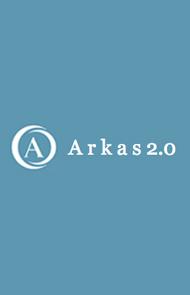Arkas

-
Period of creating
since 1950
Caretaker
-
Profession
Archaeology
-
Link
Arkas 2.0 is a research database of archaeological sites in Slovenia. Sites up to and including the Early Middle Ages that have been published in scientific publications are systematically included. Sites from urban topographies are excluded.
In addition to descriptions of sites, the database also contains information on archival material held by the Institute of Archaeology of the Slovenian Archaeological Research Centre.
Permalinks:
Database: https://hdl.handle.net/20.500.12102/Arkas
GIS: https://hdl.handle.net/20.500.12102/ArkasGIS
Cite as
LOZIĆ Edisa, ŠTULAR Benjamin, Low-code and ai-augmented Code for an Archaeological Database: Arkas 2.0. − Research Data Journal for the Humanities and Social Sciences (published online ahead of print 2024). DOI: https://doi.org/10.1163/24523666-bja10037
If you refer to a specific site in the database in a scientific article, please cite by using the permanent link and ID. For example, for the site Divje Babe II: "https://hdl.handle.net/20.500.12102/Arkas" (ID 010322.04).
If you are referencing this site in a GIS application, then: "https://hdl.handle.net/20.500.12102/ArkasGIS" (ID 010322.04).
About the app
The Arkas 2.0 application consists of five components: Najdišča (Sites), GIS, Literatura (the Literature), Elaborati (Reports) and Fototeka (Photo Library).
The Najdišča is the name of the database of sites. The simple search engine will satisfy most users. More sophisticated users will explore the possibilities offered by the advanced search, for example searching by reference to a site in the literature or by distance to a nearest town. Literature, Reports and Photo Library offer similar possibilities. You can find out the details by pressing the icon (?) after each field.
The GIS application is also easy to use (https://hdl.handle.net/20.500.12102/ArkasGIS). Most users will find what they are looking for by scrolling and moving the mouse and using the general search bar at the top left. Advanced users will find a range of options: from preset filters to the ability to compose their own search filters in the tabular view; from marking coordinates on the VAT visualisation of LiDAR data to a slider for dynamically switching between aerial imagery and visualisation of LiDAR data; from selecting one of the 24 base maps to having complete control over the display of Arkas layers. Preset options are designed for quick searches, but each user can configure the application according to their preferences.
About the data
The origins of this database can be traced back to the time after WWII, when Slovenian archaeology began work on an archaeological map of Slovenia. The project, which was coordinated by the Section for Archaeology at SAZU's Historical Institute (the predecessor of the Institute of Archaeology of the Research Centre of the Slovenian Academy of Sciences and Arts; henceforth IzA) and it involved nearly all Slovenian archaeologists. The result was the 1975 monograph Arheološka najdišča Slovenije (Archaeological Sites of Slovenia).
After 1975 the work continued within the project Archaeological Topography of Slovenia, which resulted in three volumes of Archaeological Topography of Slovenia and a number of technical papers. Another source of data on new sites was the journal Varstvo spomenikov. All these data were collected in the Register of Archaeological Sites of Slovenia, an analogue archive held by the IzA.
In the mid-1990s, the first stage of the digitisation of the Slovenian Register of Archaeological Sites occurred and a digital database was created. Its structure was based on the territorial principle of site classification and on the standardised capture of data such as the name, location, type and chronology of the site. The database was called the Archaeological Cadastre of Slovenia (ARKAS). It systematically included all archaeological sites up to and including the early mediaeval period, with the exception of urban areas. ARKAS has been available online since 2000, making it one of Europe's first online archaeological databases. ARKAS had 8,656 archaeological sites, 6,703 items of literature, 384 items in the Planoteka, 978 items in the Technical papers, and 37,476 items in the Photo Library at the end of its life.
The database was completely renewed in 2023. We are building on tradition and many years of systematic work in order to meet the demands of the modern era. We modified the structure and content so that all data relevant to modern archaeologists is still available. The new collection's focus is no longer on recording data on all archaeological sites, as the Cultural Heritage Register (Register kulturne dediščine) has done so successfully since 1996. Our database's primary function is to serve as a digital research tool suitable for analysis using modern tools such as data mining and artificial intelligence. As a result, the new web application includes tools for basic statistical analysis as well as a webGIS platform.
The transition from the cadastre to a modern research tool is also epitomised by the renaming to Arkas 2.0. "Arkas" was rebranded as name rather then the acronym containing the word "cadastre". The 2.0 designation emphasises the rebranding even more.
We are only at the start of a new era, and we hope you will join us on this exciting adventure.